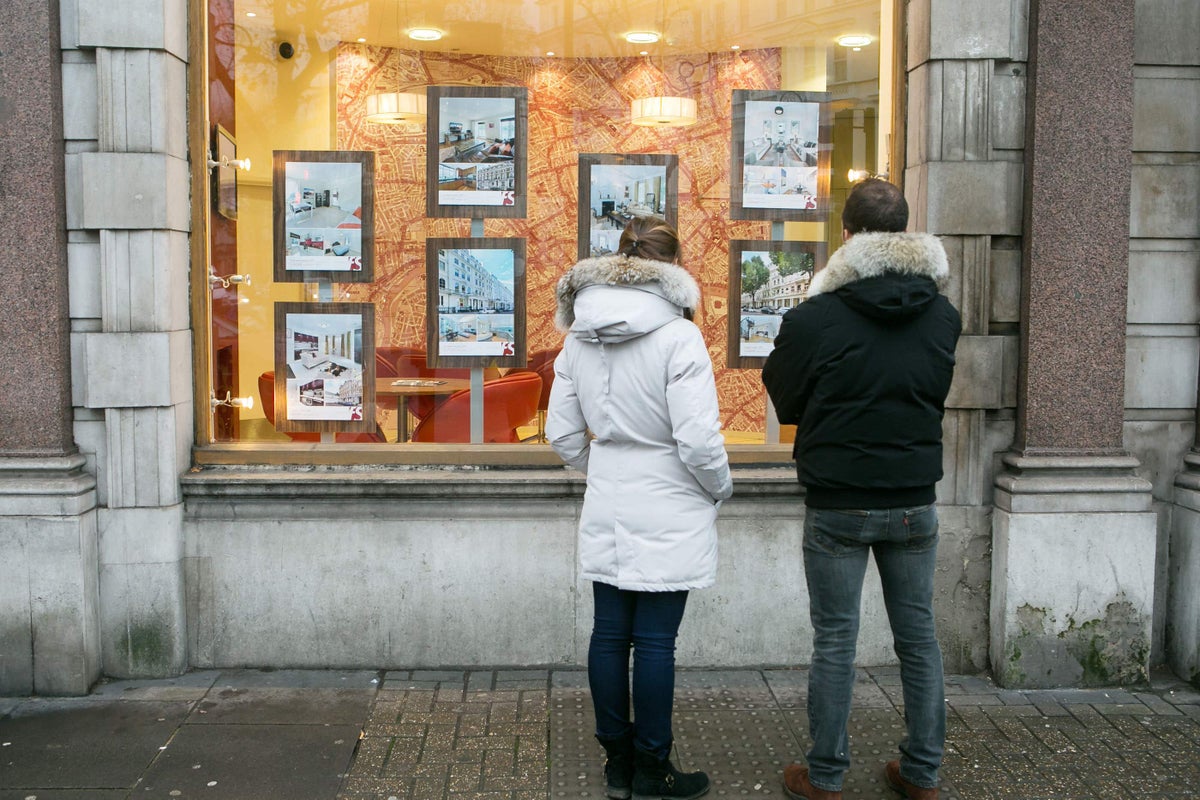The average UK house price increased by 0.5% month-on-month in September, following a 0.1% monthly fall in August, Nationwide Building Society said.
Property values increased by 2.2% annually in September, slightly up from 2.1% annual growth the previous month.
Across the UK, the average house price in September was £271,995, Nationwide said.
Robert Gardner, Nationwide’s chief economist, said: “Despite ongoing uncertainties in the global economy, underlying conditions for potential home buyers in the UK remain supportive.”
He added: “Providing the broader economic recovery is maintained, housing market activity is likely to strengthen gradually in the quarters ahead.”
Looking across the UK, Northern Ireland remained the strongest performer by a wide margin, with annual house price growth of 9.6% in the third quarter of this year.
Wales saw a slight acceleration in annual house price growth to 3.0% in the third quarter, up from 2.6% in the second quarter of this year, while growth in Scotland slowed to 2.9%, compared with 4.5% in the previous quarter.
Mr Gardner added: “England saw a further slowing in annual house price growth to 1.6%, from 2.5% in (the second quarter).
“Average prices in northern England (including the North East, North West, Yorkshire and the Humber, East Midlands and West Midlands) were up 3.4% year-on-year.”
He said annual house price growth in southern England (including the South West, Outer South East, Outer Metropolitan, London and East Anglia) was at 0.7%, with a “marked softening” in house price growth in the Outer Metropolitan and Outer South East areas.
Get a free fractional share worth up to £100.
Capital at risk.
Terms and conditions apply.
ADVERTISEMENT
Get a free fractional share worth up to £100.
Capital at risk.
Terms and conditions apply.
ADVERTISEMENT
Mr Gardner said: “Our most recent data by property type shows that semi-detached properties have seen the biggest percentage rise in prices over the last 12 months, with average prices up 3.4% year-on-year.
“Detached and terraced properties saw similar growth, at 2.5% and 2.4% respectively. However, flats saw a small year-on-year decline of 0.3%.
“Looking over the longer term, flats have seen noticeably weaker growth than other property types in recent years. For example, over the last 10 years, the price of a typical flat has increased by around 20%, less than half of the rise in the price of terraced houses over the same period.”
Alice Haine, a personal finance analyst at Bestinvest by Evelyn Partners, said: “While mortgage rates have eased over the past year, following five Bank of England interest rate cuts, the outlook for further reductions remains unclear.
“Average two and five-year fixed rate mortgages are still hovering around the 5% mark, which may be comforting for new buyers but broader economic pressures, including sticky inflation and high gilt yields, could limit further improvements.”
Jason Tebb, president of OnTheMarket, said: “Average prices are being held in check with buyers finding themselves in a strong position, which they are using to negotiate on price.”
Tomer Aboody, director of specialist lender MT Finance, said: “We are seeing that despite plenty of negativity surrounding current market conditions, buyers are still transacting, although in smaller numbers than historically. Due to less demand, price growth is minimal but still positive.”
Babek Ismayil, chief executive of home buying platform OneDome, said: “Properties listed too optimistically risk stagnating, while buyers who have their finance lined up are in the strongest position to move quickly and negotiate firmly.”
Tom Bill, head of UK residential research at Knight Frank, said: “High levels of supply and a growing sense of uncertainty as November’s Budget approaches are both keeping downwards pressure on demand and prices.”
Iain McKenzie, chief executive of the Guild of Property Professionals, said: “Buyers motivated to complete before Christmas should act swiftly, as the window is narrowing.
“Looking ahead, sentiment will hinge on the interplay between inflation, monetary policy, and potential housing tax reforms in the autumn Budget.”
Karen Noye, a mortgage expert at wealth manager Quilter, said: “The market is still just grinding forward rather than racing ahead. Lower inflation and an improving real-income picture are helping confidence, but affordability remains the binding constraint and any progress is likely to be gradual.”
Matthew Thompson, head of sales at estate agent Chestertons, said: “Uncertainty over potential tax changes is holding back activity but if the announcements bring clarity, confidence could return quickly and create an unusually busy end to the year.”
Nathan Emerson, chief executive at property professionals’ body Propertymark, said: “Construction activity in many regions has not kept pace with population growth and urban migration, exacerbating shortages, particularly in metropolitan areas. This supply constraint has intensified competition among buyers, placing upward pressure on prices.”
Here are average house prices in the third quarter of this year followed by the annual increase, according to Nationwide Building Society:
Northern Ireland, £215,122, 9.6%
North East, £169,216, 5.1%
Yorkshire and the Humber, £214,359, 3.8%
North West, £222,664, 3.2%
West Midlands, £250,951, 3.0%
Wales, £213,359, 3.0%
Scotland, £189,863, 2.9%
East Midlands, £238,702, 2.7%
East Anglia, £273,945, 1.1%
Outer Metropolitan (includes St Albans, Stevenage, Watford, Luton, Maidstone, Reading, Rochford, Rushmoor, Sevenoaks, Slough, Southend-on-Sea, Elmbridge, Epsom and Ewell, Guildford, Mole Valley, Reigate & Banstead, Runnymede, Spelthorne, Waverley, Woking, Tunbridge Wells, Windsor and Maidenhead, Wokingham), £428,405, 1.0%
South West, £306,163, 0.9%
London, £527,694, 0.6%
Outer South East (includes Ashford, Basingstoke and Deane, Bedford, Braintree, Brighton and Hove, Canterbury, Colchester, Dover, Hastings, Lewes, Fareham, Isle of Wight, Maldon, Milton Keynes, New Forest, Oxford, Portsmouth, Southampton, Swale, Tendring, Thanet, Uttlesford, Winchester, Worthing), £337,201, 0.3%

